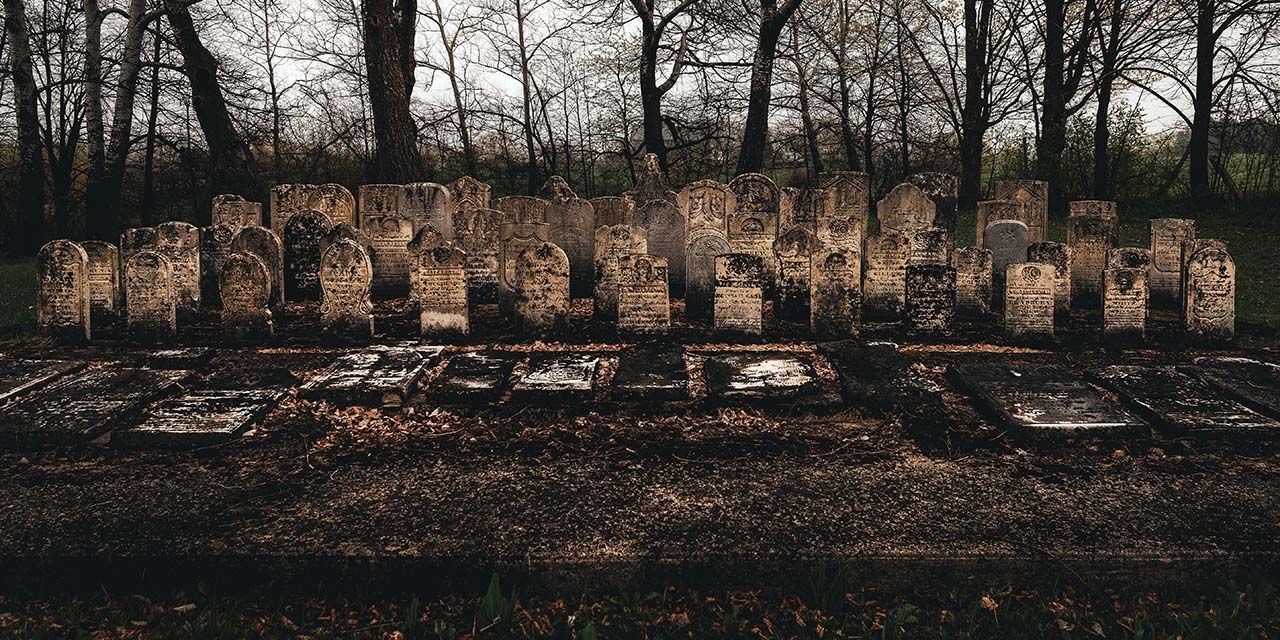Whites Methodist Heritage Cemetery, Ravenna.
The Quiet Keepers
By Cara Williams | Photography by Clay Dolan
Scattered across the countryside, heritage cemeteries preserve the stories of early settlers and communities—quiet landmarks that connect us to the lives, struggles, and resilience of those who came before.
YOU DON’T HAVE TO LOOK FAR to find history written into the landscape. Drive the backroads of Simcoe, Grey, and Bruce counties and you’ll come across them without warning: a few moss-covered stones behind a fence, a limestone wall half-hidden in the trees, a wrought-iron gate opening into a patch of quiet ground. These small cemeteries are easy to overlook, yet they carry the weight of history. Some are tied to churches that have long disappeared, others to families whose names still echo in nearby towns. Each one is a reminder that the past lingers quietly in the landscape, holding stories of the settlers, pioneers, and communities that once thrived here.
The Town of The Blue Mountains maintains seven heritage cemeteries. In Banks, the Banks United Cemetery—originally Knox Presbyterian—dates back to 1865. Once tied to several different Presbyterian charges before joining the United Church in 1925 and later the Beaver Valley charge, it still holds a scattering of limestone markers worn smooth by time. The church is long gone, but the stones reveal fragments of the lives of farming families who built this community—names, dates, and the occasional epitaph that hint at both hardship and hope.
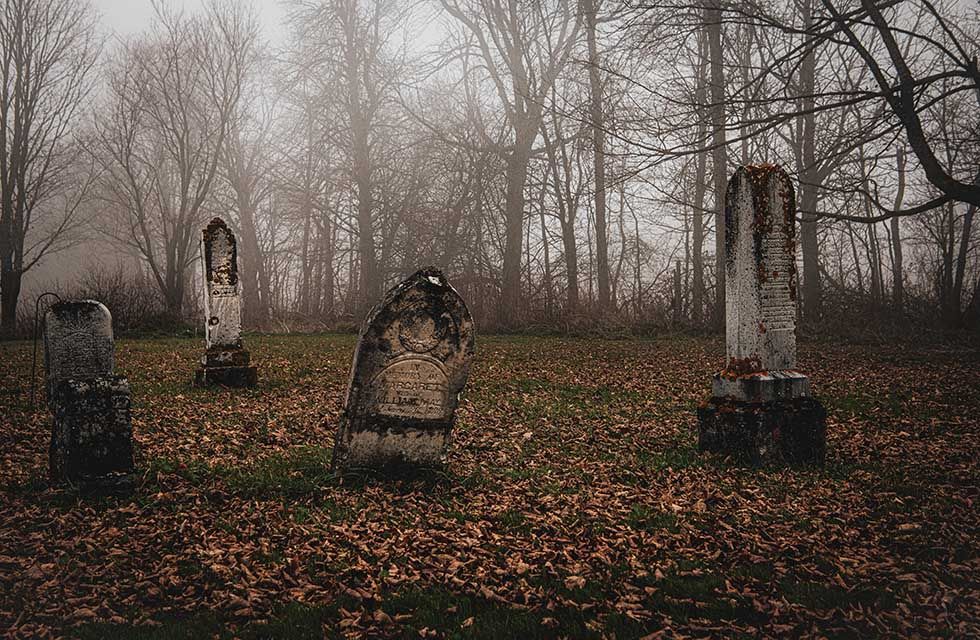
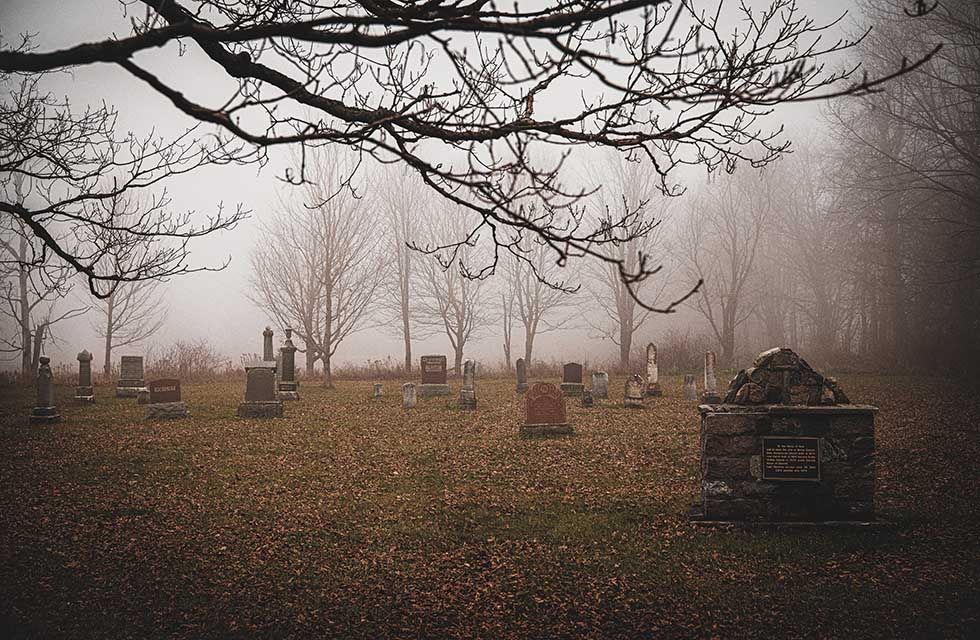
Banks United Heritage Cemetery, Banks.
In Heathcote, the Presbyterian Cemetery was established in or before 1872, while Gibraltar holds two heritage sites: the Presbyterian Cemetery, founded in 1880 on land given by John and Jane Cooper, and the Carmel Methodist Cemetery, established in 1870 on land donated by Charles Hogg. Near Victoria Corners, the Anglican Heritage Cemetery was established in the early 1860s and is still cared for today by local residents.
Whites Methodist Cemetery, believed to be the first in the former Township of Collingwood, dates to around 1849–1850, on land purchased from Samuel White for five shillings. Later, its monuments were gathered into a central location for preservation. The Primitive Methodist Cemetery, established in 1862 on land donated by William and Martha Corley, still stands along the 10th Line near Red Wing and is maintained today by local caretakers.
Just west of Blue Mountain, near Ravenna, another modest graveyard tells a quieter story. Once serving local Methodist and Congregationalist families, its weathersoftened stones stand as a reminder of the small rural congregations that dotted the countryside. Though records are scarce, the site reflects a time when church, farm, and family life were deeply intertwined.
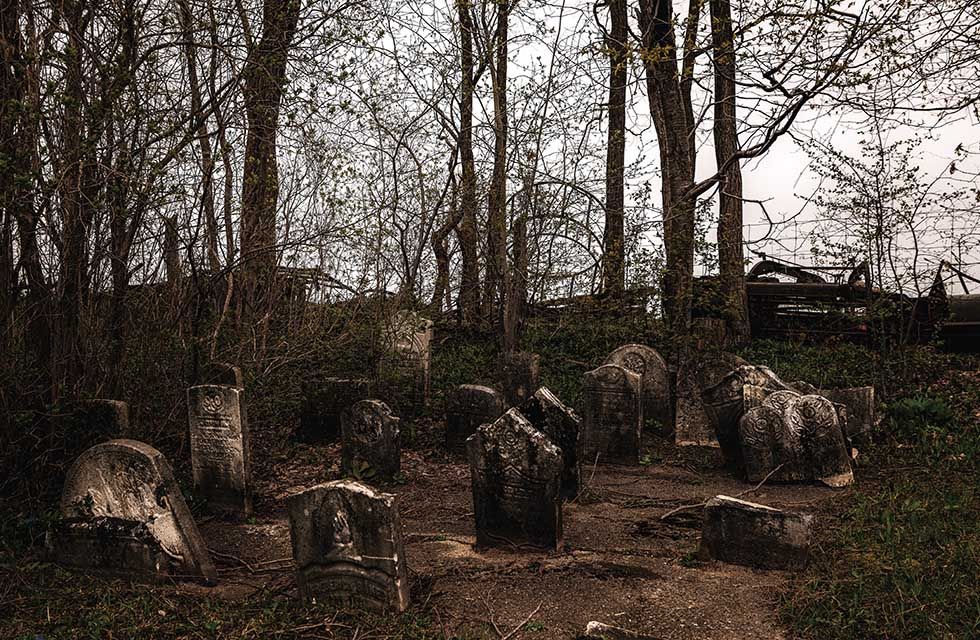
Bethesda Cemetery, Meaford.
In Priceville, the Old Durham Road Black Pioneer Cemetery stands as a memorial to one of Ontario’s earliest Black settlements, established in the late 1840s and early 1850s by formerly enslaved people and free Black settlers. At its peak, nearly every 50-acre lot along this stretch of road was occupied by a Black family, many arriving via the Underground Railroad or in search of opportunity in Upper Canada. By the 1930s the cemetery had been ploughed under, its stones removed or repurposed. The site might have been lost entirely if not for restoration efforts beginning in the 1980s. Four surviving headstones were recovered in 1990, and a granite monument was unveiled that same year. More recently, a pavilion was built to safeguard the memorial and symbolize safe passage for those who fled slavery. Ground-penetrating radar has confirmed as many as 80 graves beneath the soil. Today, the cemetery is protected by Heritage Grey Highlands.
Other sites echo similar histories. The Petherton PioneermBaptist Cemetery dates to around 1860, established beside a log Baptist church. When the church closed in the 1890s, thecemetery fell into neglect, only to be restored in 1977 by descendants who gathered surviving stones into a cairn marked with a plaque. In Midhurst, the Pioneer Cemetery contains some of the township’s earliest burials. The names on its headstones still appear on local streets and landmarks, linking the present to its earliest settlers.
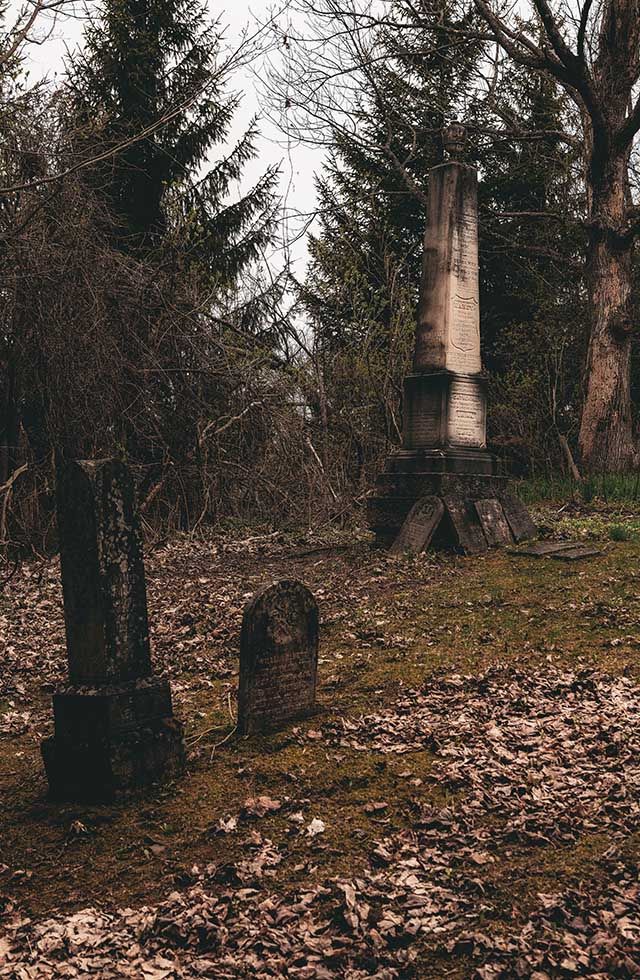
Duxbury Cemetery, Meaford.
For those tracing family history, the Ontario Genealogical Society maintains searchable databases of cemetery transcriptions, photographs, and maps. Municipal heritage committees and local museums preserve burial records, while in Bruce County, the Bruce County Museum offers a cemetery locator tool, and Grey County Archives holds maps and registers for many pioneer plots.
Whether large or small, restored or nearly forgotten, these heritage cemeteries are part of our shared landscape and history. They tell of immigration and settlement, of perseverance, and of communities that have evolved—or disappeared—over the centuries. The next time you find yourself on a winding back road and glimpse one, slow down. Look closer. Imagine the lives behind the names. Every weathered stone is a chapter in the story of this place, quietly waiting to be read. E
Cemetery Etiquette
Cemeteries are places of history, but they are also places of rest. If you decide to visit one of the sites mentioned in this story—or any burial ground—keep these tips in mind:
• Be respectful of the site and surroundings: Speak quietly, avoid disturbing wildlife, and treat all stones, fences, and gates with care.
• Stay on marked paths or mown areas: Avoid walking directly on graves where possible.
• Don’t touch or lean on headstones: Many are fragile and can be damaged by even gentle contact.
• Leave everything as you found it: This includes flowers, stones, or personal items left by families.
• Photography is welcome—but discreet: Capture the atmosphere without intruding on private moments if others are visiting.
• Check local bylaws: Some cemeteries have visiting hours or restrictions.
A thoughtful visit not only honours those buried there—it helps preserve these sites for future generations to discover and remember.

